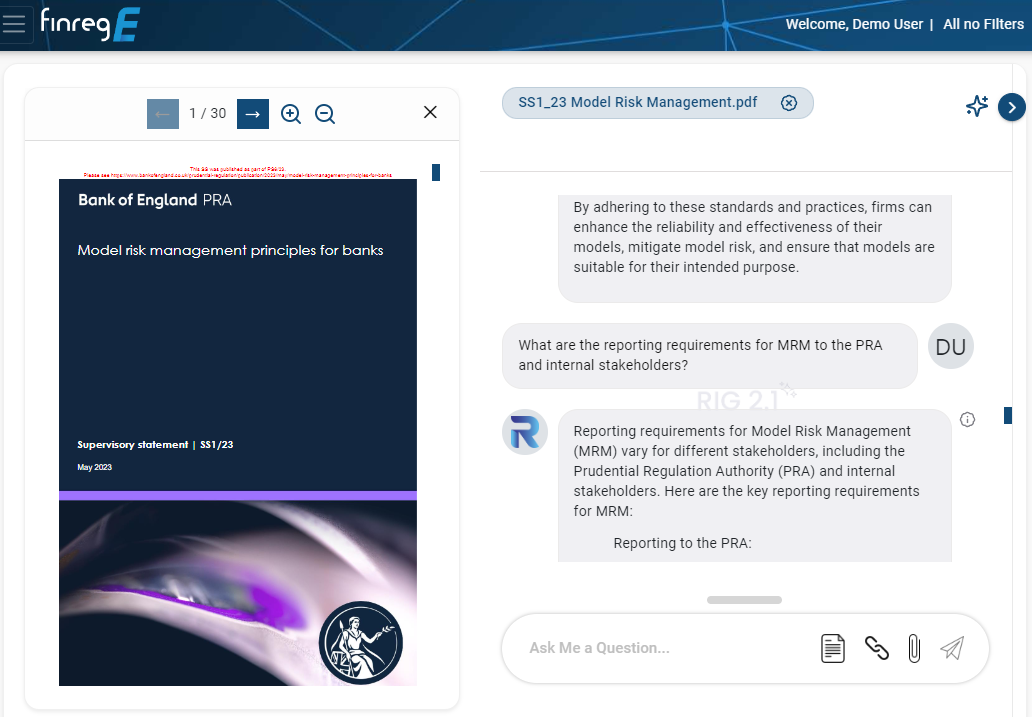Between the proliferation of cryptocurrency and the regressive impact of exogenous events, we see the finance industry undergoing a massive transformation that could change how the sector operates.
Looking to limit the regressive effects of outside developments or, in the case of cryptocurrency, emphasise their benefits, regulators are making significant changes to key regulatory frameworks. For example, firms engaging in cryptocurrency must now register with the Financial Conduct Authority and comply with AML/CFT reporting protection rules.
Significant updates to financial compliance mean that financial institutions (FIs), such as banks, insurance, credit unions, and investment companies, will have to update their compliance management procedures to tackle massive changes.
However, many FIs have outdated processes that are weighed down by bloated procedures, duplicate steps, and red tape—making compliance management costly and inflexible. This could be problematic given the changes we can expect to financial regulation over time.
Meeting these challenges would require FIs to make significant changes to their compliance procedures. We will explain how to turn compliance management into a streamlined, efficient process by using an automated regulatory compliance solution to optimise three critical processes.
Optimising compliance workflows using automated technology
Integrate automation to support your digital ecosystem
Intelligent automation has become integral for meeting compliance requirements while maintaining a competitive advantage in financial services.
Most financial organisations operate with large siloed digital ecosystems. This isolation makes it harder to supervise transactions, increasing the chances of a compliance violation taking place.
Preventing compliance violations within a complex digital ecosystem requires automation technology. Platforms, such as automated regulatory compliance software, can assist regulatory teams in overseeing regulatory functions across a complex ecosystem due to superior monitoring capabilities. This would allow you to spot violations, or signs of one, and fix them.
Moreover, automation would allow organisations to improve banking operations in different areas beyond just compliance. For example, a European bank with over 10 million customers improved overall efficiency by 150% through automation alone.
Standardise regulatory reporting procedures
Despite its importance to compliance with regulation, financial institutions have historically struggled with compiling regulatory reports. Financial institutions have stumbled at this stage due to a fragmented and ambiguous reporting process that compromises their ability to meet deadlines, drive up costs, and make the process worthwhile.
With compliance updates for financial regulation coming frequently, it is vital for financial institutions to review their regulatory reporting practices and adopt more efficient processes.
Hence, why standardising regulatory reporting practices is critical. Creating frameworks for best reporting practices can remove ambiguity from the reporting process, making it easier to complete this procedure in a shorter time period.
Some of this includes technology-driven initiatives, such as International Swaps and Derivatives Association (ISDAs) and Digital Regulatory Reporting (DRR), which can play a critical role in streamlining reporting by offering firms a chance to build an open-source standardised reporting framework. This makes it easier to adapt to coming updates.
Alongside standardising the reporting framework, organisations should automate part of the reporting process. Compliance solutions can provide the necessary data to populate a report and even provide templates where necessary, which helps optimise the process.
Adopt a regulatory-as-a-service approach
Financial compliance management and regulation are constantly evolving in response to external events; hence, compliance standards are never static.
Yet, financial firms have static compliance management practices. They are stuck in a specific mode of operations until a regulatory update “jolts” them, galvanising them into changing regulatory operations.
Hence, financial institutions need to adopt a regulation-as-a-service approach, which encourages a more agile take on compliance management and allows organisations to adapt to the latest updates.
This happens because a “regulation-as-a-service” encourages institutions to adopt a more efficient take on compliance regulation. Instead of the static, siloed approach, regulation-as-a-service encourages organisations to be constantly aware of the current status of compliance functions through real-time monitoring.
Adopting this approach leads to several benefits. For example, the approach encourages merging multiple data sources to give organisations insight into regulatory requirements across different customer functions, such as anti-money laundering (AML), know your customer (KYC), and sanctioned screening.
Furthermore, a regulation-as-a-service approach can optimise risk management. It encourages regulators to make calculations more accurate and efficient than before, which makes it easier to identify compliance gaps and at-risk processes more efficiently than before.
Automated regulatory compliance platforms can help organisations adopt the more agile “regulation-as-a-service” approach by optimising regulatory management processes
Meeting compliance regulations in an evolving regulatory environment
With financial regulation constantly evolving with new updates, it is important to stay on the right side of regulators by converting compliance management into an agile process.
By recalibrating compliance management into an agile process, you can meet the changing demands of financial regulatory bodies.
Furthermore, an agile procedure allows you to streamline regulatory compliance processes, which makes it easier to adjust them to meet new updates while reducing compliance costs.
Automated regulatory compliance platforms are critical for making this procedure a reality. The technology can help organisations make sense of the immense volume of regulatory text, either by filtering out “regulatory noise” or irrelevant publications or by providing insight into current compliance processes. Through clever applications of automated compliance technology, you have the freedom to streamline and optimise the process, which will be critical for responding to new updates in the future.


